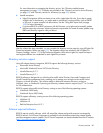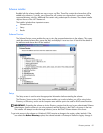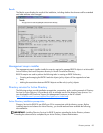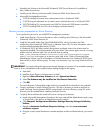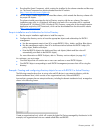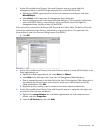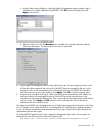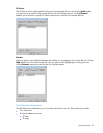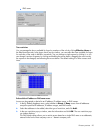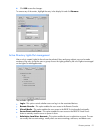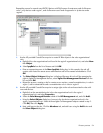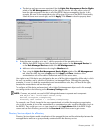
Directory services 88
Directory User Context 1 = cn=Users,dc=testdomain,dc=local
For example, to gain access, user Mel Moore, with the unique ID MooreM, located in the users
organizational unit within the testdomain.local domain, who is also a member of one of the
remoteAdmins or remoteMonitors roles, would be allowed to log in to the RILOE II. Mel would enter
testdomain\moorem, or moorem@testdomain.local, or Mel Moore, in the Login Name field of
the RILOE II login screen, and use their Active Directory password in the Password field of that screen.
Directory services objects
One of the keys to directory-based management is proper virtualization of the managed devices in the
directory service. This virtualization allows the administrator to build relationships between the managed
device and user or groups already contained within the directory service. User management of RILOE II
requires three basic objects in the directory service:
• Lights-Out Management object
• Role object
• User objects
Each object represents a device, user, or relationship that is required for directory-based management.
NOTE: After the snap-ins are installed, ConsoleOne and MMC must be restarted to show the new entries.
After the snap-in is installed, RILOE II objects and RILOE II roles can be created in the directory. Using the
Users and Computers tool, the user will:
• Create RILOE II and role objects.
• Add users to the role objects.
• Set the rights and restrictions of the role objects.
Active Directory snap-ins
The following sections discuss the additional management options available within Active Directory Users
and Computers after the HP snap-ins have been installed.



